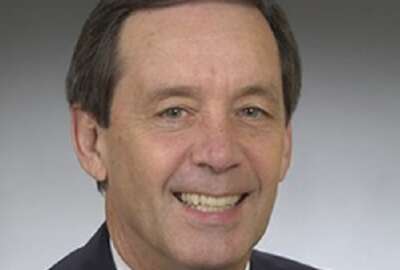

President Donald Trump said a pay freeze wouldn’t hurt Uncle Sam in either recruiting or retaining good people. Government unions denounced the proposed pay...
If Las Vegas bookies had a special betting niche for federal civil service matters, these would likely be the current odds on the probability of a federal white collar pay raise, cost of living adjustments for retirees and the upward mobility of 2019 health insurance premiums:
If the above predictions prove to be accurate it means that retirees will get some much needed help paying higher health premiums while working folks may need to leave the comfort zone of the health plan they’ve been in since the Clinton or Bush administrations. They will likely need to look for comparable coverage with a lower premium, if they can find it.
President Donald Trump has made it official that he will not recommend a 2019 increase. He said it wouldn’t hurt Uncle Sam in either recruiting or retaining good people.
Data from the bipartisan Federal Employees Pay Comparability Act of 1990 — passed by a Democratic Congress and signed by President George H.W. Bush — indicated that feds are due a 1.9 percent raise in January, with higher amounts going to many locality pay areas. This year, workers got a 1.9 percent raise that worked out to 2.2 percent for feds in high-wage areas like San Francisco-San Jose, New York City and the Washington, D.C.-Baltimore locality pay zone.
Feds also went three years without a pay raise during the Obama administration.
Government unions denounced the proposed pay freeze and Trump’s attitude toward federal workers. A Sept. 4 editorial in The Washington Post ran under the headline “Mr. Trump’s cynical pay freeze” and began “Even by the standards of President Trump’s administration, his proposal to freeze federal pay at current levels through 2019 counts is an unusually hypocritical policy choice.”
Many congressional Democrats favor a federal pay raise as done. Joining them is one lone Republican, Rep. Barbara Comstock (R-Va.), whose congressional district hugs the Potomac River and is chock full of both active and retired federal workers as well as their family members. Her constituents also include merchants who rely heavily on the federal salary dollar.
September is the last month of the 3-month COLA countdown. The Consumer Price Index, which determines the size of any COLA, actually declined slightly from indicating a COLA of 2.72 percent in June to 2.71 percent in July. The actual inflation adjustment will be based on the increase in the current year third quarter over the same period last year.
Some watchers predict that the summer spike in oil prices will drive the January 2019 COLA to at least 3 percent, but the size of the COLA won’t be announced until about mid-October.
The inflation index tracking nationwide costs is almost always higher and ahead of the normal pace of inflation and deflation. This time last year, the government announced that 2018 premiums in the Federal Employee Health Benefits Plan would rise “an average” of 4 percent.
But for many retirees and workers the actual increase was more like 6.1 percent. Feds and retirees did get a pay raise and a COLA to help offset those higher 2018 premiums. The government continues to pay the lion’s share at 70 to 75 percent of the premium for most workers and retirees. Congress is looking at a series of “reforms” that would cut government costs to the health program by giving workers vouchers to purchase insurance.
There will be an extended open enrollment period from mid-November to early December when workers, retirees and survivors can shop for a health plan among the 260-plus choices offered by Uncle Sam. Most workers and retirees are eligible to join any of about 20 national and HMO plans in their area.
While technically still up in the air, a pay raise of any amount is a long shot. The Senate approved a 1.9 percent raise for 2018 as part of the National Defense Authorization Act, while the House version of the NDAA is silent on federal pay. The two groups are expected to go to conference and iron out differences in several parts of the NDAA.
In the meantime, federal unions, retiree groups and associations representing managers and professionals are working Capitol Hill for a 2019 pay raise.
By Amelia Brust
In 1897, five years before her debut “The Tale of Peter Rabbit” was published, children’s author Beatrix Potter wrote a scientific paper on the origin of the fungi Agaricineae and submitted it to the Linnean Society. But George Massee, a scientist at Kew’s Royal Botanic Gardens, had to present the paper on her behalf because women were not permitted to be members of the Linnean Society or attend meetings.
Source: The Guardian
Copyright © 2025 Federal News Network. All rights reserved. This website is not intended for users located within the European Economic Area.
Mike Causey is senior correspondent for Federal News Network and writes his daily Federal Report column on federal employees’ pay, benefits and retirement.
Follow @mcauseyWFED

